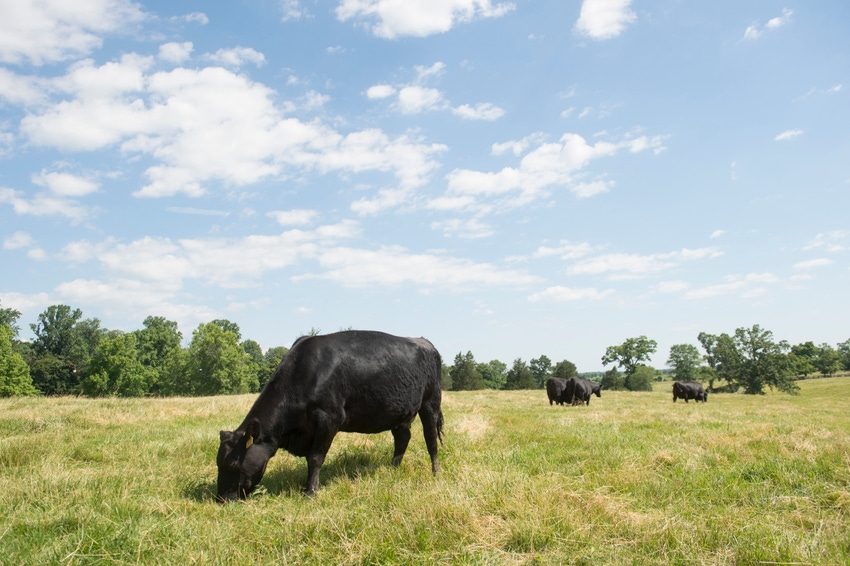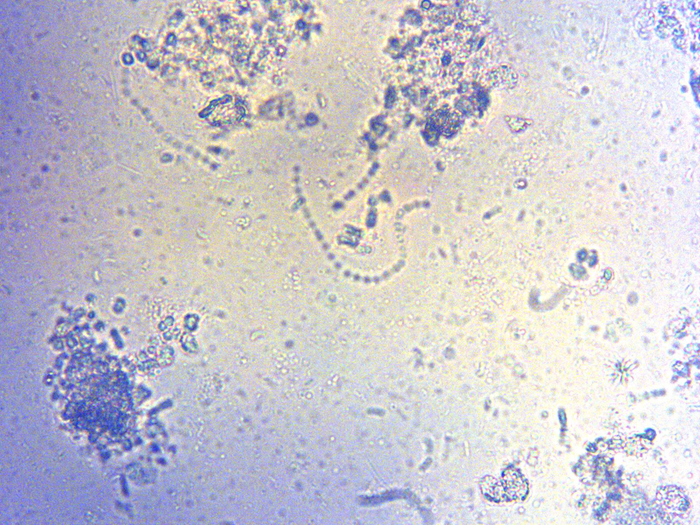Tiny rumen microbes have a significant impact on herd health.
August 24, 2017

By Ted Perry
Did you know a cow’s rumen is home to more than a quadrillion (yes, 1,000,000,000,000,000) essential microorganisms? These tiny microbes directly affect herd health. What you feed a cow can help maintain a healthy rumen microbe population and optimize nutrient digestion.
A quadrillion reasons
When you feed your cattle, you’re actually feeding an ecosystem of bacteria, protozoa and fungi. Rumen microbes work together to break down what a cow eats, turning the feed into energy and protein. Keeping microbes happy can keep cows productive and in the herd.
Here are three things you should know about rumen microbes:
1. The macro on microbes
Understanding rumen microbes and their roles can help when reviewing your management and nutrition practices. Three main microorganisms are responsible for breaking down feed and forage into nutrients cattle can use.
Protozoa are the largest of the three rumen microbes, almost visible to the naked eye at 100 microns in length. Nearly 10 million protozoa populate just 1 milliliter of rumen fluid. Protozoa digest bacteria, starch granules and fiber.

Bacteria are 100 times smaller than protozoa. In the same milliliter of fluid, nearly 100 billion bacteria are hard at work digesting sugars, starch, fiber and protein.
Fungi produce powerful cellulolytic enzymes key to breaking down fiber in grass and hay, making forage more easily digestible. Comparatively, this is a smaller population (merely 10,000 fungi in 1 milliliter of rumen fluid), however, fungi are influential in nutrient delivery to cattle.
Together, rumen microbes produce volatile fatty acids – acetic, butyric and propionic – which cows use as an energy source. This energy is used for maintenance, growth, lactation and reproduction, making these tiny microbes a very big deal.
2. Balancing rumen pH
Rumen pH is never constant, but it’s vital to maintaining a healthy rumen microbe population. Microbes don’t appreciate change and can be easily wiped out with sudden pH fluctuations.
Naturally, pH goes down after each meal and rises again when the animal chews its cud. Ideal rumen pH should stay at 5.9 or above. However, poor quality feed, abrupt diet changes or stress can cause changes in rumen pH and lead to health problems.
Bloat occurs when rumen microbes go rogue. Gas is naturally created when rumen microbes break down feed. However, an unbalanced rumen environment can result in excess gas and lead to bloat when a cow is unable to rid itself of the surplus.
Among the rumen bacteria population resides lactic acid producers and lactic acid users. Sub-acute rumen acidosis (SARA) occurs when the population of bacteria gets out of balance and more lactic acid is produced than used.
If rumen pH falls below 5.4 and stays there, the microbe population collectively becomes lactic acid producers. A build-up of lactic acid can paralyze muscles, including the diaphragm, and lead to death.
3. Keep microbes active
When the rumen environment is balanced, microbes flourish and remain active. Active microbes successfully breakdown feed and forage, allowing the cow to absorb nutrients. On the contrary, less active or inactive microbes fail to deliver necessary nutrients to the cow.
How do you keep microbes active? Consistent nutrition. Consistent, reliable nutrition can help maintain a stable rumen pH and allow microbes to thrive.
Cattle and their microbes rely on each other – neither would survive without the other. The science of nutrition is having a balanced diet – a diet that provides the nutrients required for optimal rumen health. Remember, consistent nutrition can help maintain a steady rumen pH and happy microbes. Happy microbes can efficiently digest and use nutrients, and better nutrient utilization can result in productive cows.
Talk to your nutritionist about ways to optimize your herd’s rumen health.
Perry is a cattle nutritionist with Purina Animal Nutrition
You May Also Like



